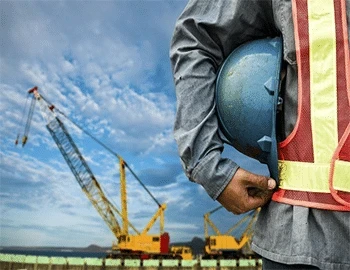
The 2017 Forecast Of Construction Jobs
According to a recent Forbes magazine article, the economy is slowly rebounding while the housing and non-residential construction sectors continue to grow. For example, multi-family apartment construction grew 14 percent and the annual housing construction rate was 1.2 million in 2016. Below introduces the economic outlooks for construction jobs and the construction industry.
Projected Economic Trends
Most economic experts feel that the general economy will continue to struggle with slow growth and limited consumer participation. A mild GDP growth rate is connected to low wages and productivity growth number. Although most companies are spending more on construction, they are reducing other capital expenditures for things like
machinery and equipment. Most of these companies are not focusing on expanding capacity because they are lowering operating costs through minimizing expenditures. However, an important construction industry report states that 2017 construction starts will increase five percent to over $700 billion. As a result, the private sector will continue to drive non-residential construction projects across the country.
Excellent Job Outlook
The Bureau of Labor Statistics states that construction labor jobs will continue to increase at 13 percent, which is faster than the national average. The job growth outlooks for certified carpenters is six percent, for building inspectors is eight percent and for electricians is 14 percent. Construction professionals are needed in all construction sectors, so these workers will enjoy better career opportunities. Job possibilities include project administrator, remodel supervisor, demolition planner, construction engineer, environmental consultant, heavy equipment operator and land development specialist. Other career specializations that will continue to be in demand in 2017 involve HVAC, masonry, drywall, painting, flooring, roofing and plumbing.
High Demand Fields
Residential construction of multi-family home buildings is growing fast, while single-family home growth continues to plod along. Changing demographic factors are driving the demand for more temporary housing rentals. Millennials are moving away from home or college to face serious student debt, but they require agile accommodations that meet their flexible lifestyles. The trend is to prefer urban cores with public transit and eco-friendly lodging that have been designed by construction companies with strong environmental credentials. Therefore, there will likely be more urban residential construction jobs available in 2017. When millennials start marrying and raising children, the need for suburban land plots and traditional housing may grow.
Nonresidential Career Opportunities
Nonresidential building construction is gradually improving through consumer spending, but Internet-based retail sales are growing at an annual rate of at least 10 percent. This means that many traditional brick and mortar retailers have been forced to close outlets, but this has created new renovation opportunities for alternative businesses. In order to avoid these harsh cost-cutting measures, many retailers are implementing creative marketing and product expansion projects to access new consumer markets. Strong Internet-based sales mean that warehouse, local fulfillment center and regional distribution center construction will continue to expand. Private office building construction is expected to remain the same with vacancy rates being matched by new startups and entrepreneurial projects.
Going Green
Global warming, carbon footprints and operational sustainability are still important advertising keywords for corporations across the country. More and more companies are realizing the public relations benefits of green building designs and construction. While the initial cost of going green is high, there are many social, economic and environmental for companies. For example, they can reduce their operating costs, improve the local quality of life and use their sustainability practices to engage consumers. Companies that want to invest in green practices and profit from eco–conscious consumers need construction professionals to retrofit existing buildings and engineering experts to design environmentally friendly spaces.
The 2017 forecast of construction jobs is good because there is strong demand for sustainability, residential housing and green commercial buildings. Readers can access career advice for the construction, engineering and environmental industries here.
Michael DeSafey is a leading executive recruiter for professionals in the construction, engineering and environmental industries. He is currently the President of Webuild Staffing www.webuildstaffing.com . To learn more about Michael or to follow his blog please visit www.michaeldesafey.com
